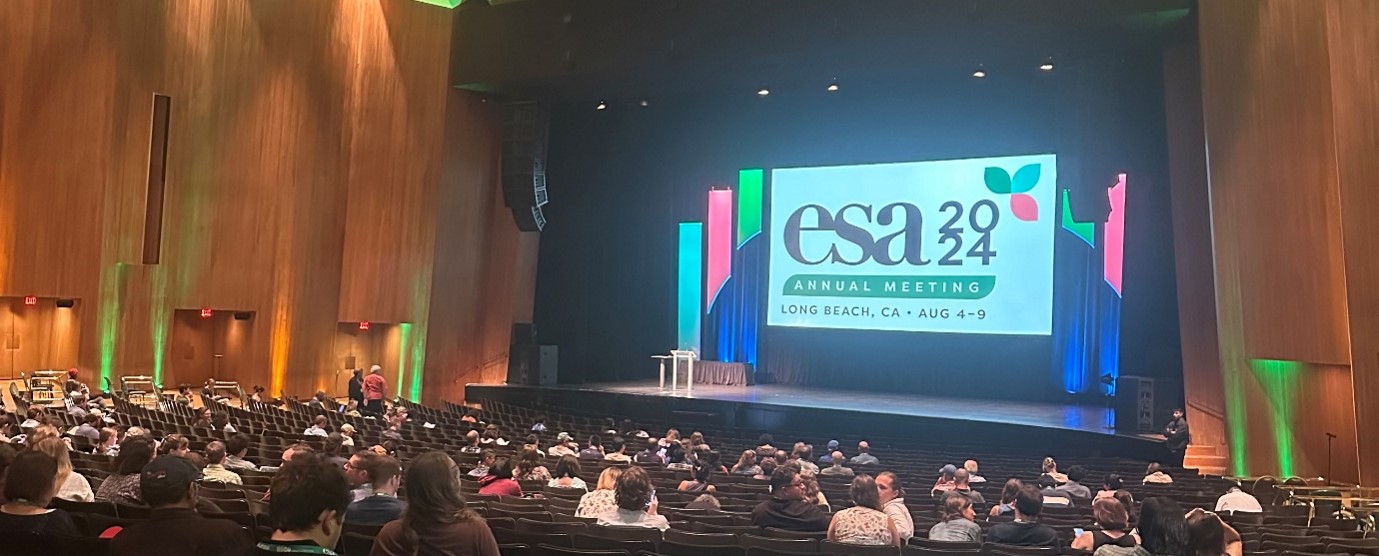 Earlier this month, eight members of the LEMONTREE team attended the Ecological Society of America (ESA) Annual Meeting, held from August 5-8 in Long Beach, California. Nicknamed “The City of Good Living,” Long Beach provided a vibrant backdrop for this gathering of ecologists from across the globe. The ESA conference is one of the most significant events on the ecological calendar in America, and this year’s theme emphasised the society’s mission of supporting ecologists throughout their careers. It was a fitting platform for LEMONTREE team members—ranging from established PIs to early career researchers—to share their research.
Earlier this month, eight members of the LEMONTREE team attended the Ecological Society of America (ESA) Annual Meeting, held from August 5-8 in Long Beach, California. Nicknamed “The City of Good Living,” Long Beach provided a vibrant backdrop for this gathering of ecologists from across the globe. The ESA conference is one of the most significant events on the ecological calendar in America, and this year’s theme emphasised the society’s mission of supporting ecologists throughout their careers. It was a fitting platform for LEMONTREE team members—ranging from established PIs to early career researchers—to share their research.
Associate Professor Nick Smith, a Principal Investigator (PI) of LEMONTREE and head of the PhUnFETTy Lab (Physiology for Understanding the Functioning of Ecosystems) at Texas Tech University, led the LEMONTREE contingent. Members of his team were present not only to discuss their research but also to highlight the broader contributions of LEMONTREE’s research to the field of ecology.
Spotlight on LEMONTREE Research
The LEMONTREE team made significant contributions to the conference, presenting cutting-edge research across a diverse range of topics:
- Alissar Cheaib delivered a talk on “Plant nutrient acquisition strategy modulates the nutrient and water costs for photosynthesis globally,” offering new insights into the intricate balance plants maintain to optimise their growth and survival.
- Isabella Beltran presented her research on “Dynamic responses of acquisitive species to precipitation drive plant community dynamics in a semi-arid grassland under eutrophication.” Her work sheds light on how changes in precipitation patterns influence plant communities, particularly in nutrient-enriched environments.
- Snehanjana Chatterjee discussed “The influence of Alliaria petiolata invasion on native plant resource use economics,” exploring how invasive species like garlic mustard disrupts the resource allocation strategies of native plants, with broader implications for ecosystem stability.
- Evan Perkowski captivated the audience with his talk on “Negative effects of an allelopathic invader on native species’ carbon assimilation increase in strength as the growth season progresses.” While not heavily focused on EEO theory, Evan’s research provides valuable applications for understanding the impacts of invasive species from an invasion ecology perspective.
- Zinny Ezekannagha shared findings from a long-term global grassland experiment in her talk titled “Are grasslands changing gears: Long-term global grassland experiment reveals a shift in C4 vegetation cover driven by temperature and soil nutrient availability.” Zinny’s research highlights how global climate and nutrient changes are reshaping grassland ecosystems.
- Monika Kelley presented “Eutrophication increases the competitiveness of acquisitive species in grasslands,” revealing how nutrient enrichment in grasslands can favour fast-growing species, potentially altering the balance of plant communities.
In addition to the intellectual exchange, our team also had the opportunity to explore Long Beach. A highlight of their trip was a visit to the iconic Queen Mary Ship, a historic ocean liner now permanently moored in Long Beach Harbor. As we move forward, the insights and connections gained at ESA will undoubtedly fuel the continued growth and impact of LEMONTREE’s research.

Photo credits: Zinny Ezekannagha.
